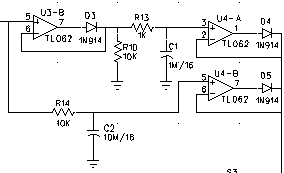The schematics and some curvers for the Constant Amplitude Phase Shift EQ are now available on my site.
Go to http://users.pandora.be/Rogy/IEMFinalizer/CAPS%20EQ/
and choose one of the five bands' folders.
Next thing to do is sim the Width control circuit and make a choice on the multiband comp topology.
For the comp probably a VCA will be the best gain reduction element choice.
I'll have a look at That Corp's design notes; I have some 2181's laying around that might be just suitable for the job...
Greetz,
Rogy
Go to http://users.pandora.be/Rogy/IEMFinalizer/CAPS%20EQ/
and choose one of the five bands' folders.
Next thing to do is sim the Width control circuit and make a choice on the multiband comp topology.
For the comp probably a VCA will be the best gain reduction element choice.
I'll have a look at That Corp's design notes; I have some 2181's laying around that might be just suitable for the job...
Greetz,
Rogy



